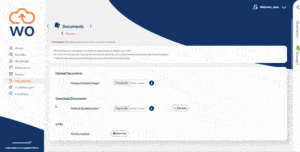You can’t offer a great customer experience unless you have a team capable of delivering it. Or in the words of Sir Richard Branson:
“Clients do not come first. Employees come first. If you take care of your employees, they will take care of the clients.”
Despite this, the focus for most business strategy tends to remain on the customer experience – not that of employees. This starts from the moment a successful candidate accepts a role.
After the elation of a new job, a new hire often faces the anxiety and frustration of the starter experience. People are often left waiting for weeks as contractual paperwork is manually posted, signed and returned.
Without an effective onboarding process, new starters find themselves entering a new role with minimal help, training or support. A recent study found that 56% of new starters in the UK have no welcome or team bonding activities.
The Welcome Aboard survey of more than 2,000 UK office workers also found that 46% had negative onboarding experiences; this caused 10% of them to leave or reject the new role.
This is why a failed onboarding process has real business consequences. And why investment in the employee experience can deliver a dependable return on investment. With minimal cost, technology allows the new starter experience to be transformed. Here are some of the ways how:
Fast and simple process
Switching to a paperless onboarding process can reduce processing times from weeks to days, possibly even hours and minutes in some cases. Cloud-based handling of contractual documents allows new starters to instantly access all of the information they require, and digital signing allows contracts to be completed easily. By reducing processing times and removing the need for physical documentation, it creates a much more user-friendly experience.
Better communications
Typically, the information a new worker receives during the onboarding phase is limited to contractual paperwork and a starter-pack containing additional company info. With a digital process, there’s much more flexibility to share information – from welcome videos to a Zoom call.
It provides the tools needed to help communicate the culture and ethos of a company and to deliver a warm, welcoming and engaging experience. This is particularly important with remote working roles.
Improved admin efficiency
Any errors or delays during onboarding will magnify the unavoidable anxiety and stress of starting a new job. Problems are often caused by hiring teams having to rely on manual and paper-based processes.
A cloud-based management approach helps to reduce the risk of mistakes being made with each step of the process being monitored in real-time. A system that sends reminders and alerts to ensure that all HR tasks are completed ensures a smooth starter experience.
Performance tracking
An automated digital process allows onboarding performance to be monitored in ways that are not possible with a traditional approach. Accurate data allows any inefficiencies to be identified and tackled.
It is important to be able to capture qualitative data to be collected with new starters able to rate their experience. It allows HR managers to see how any changes to the onboarding process are impacting the experience.
Summary: Building the best workforce
So while the focus for any business is always going to be delivering the best possible customer and client experience, this can only be achieved if you have a team capable of delivering it.
To achieve this requires a commitment to improving the employee experience which is all too often missing. With better tools and a reduced administrative burden, HR managers can build the foundations for a stable, productive workforce which can meet and exceed customer expectations.




